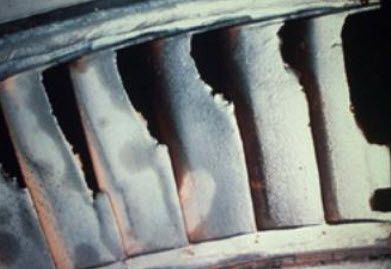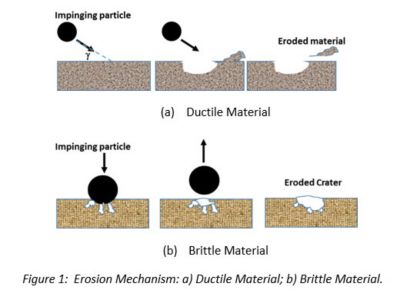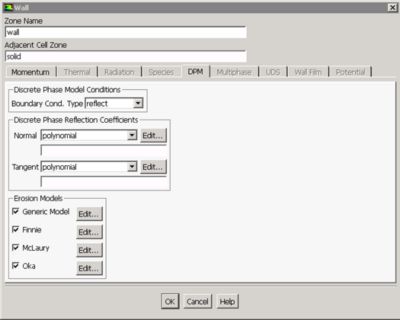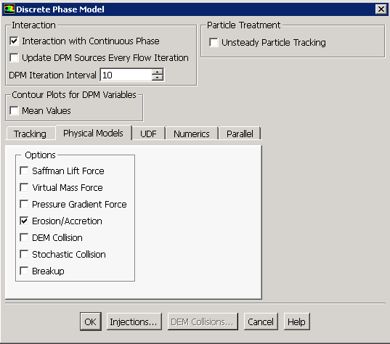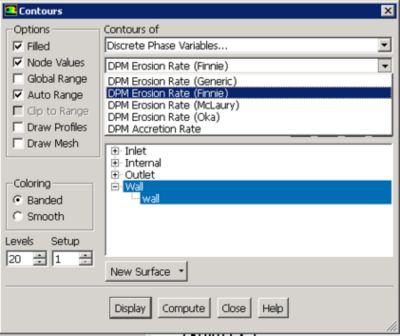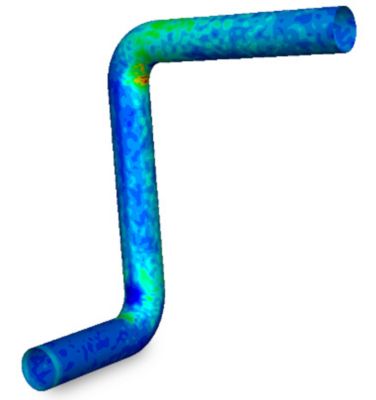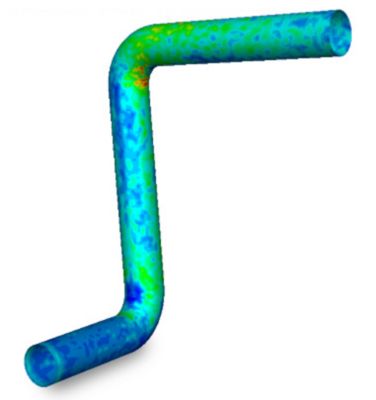-
United States -
United Kingdom -
India -
France -
Deutschland -
Italia -
日本 -
대한민국 -
中国 -
台灣
-
Ansys si impegna a fare in modo che gli studenti di oggi abbiano successo, fornendogli il software gratuito di simulazione ingegneristica.
-
Ansys si impegna a fare in modo che gli studenti di oggi abbiano successo, fornendogli il software gratuito di simulazione ingegneristica.
-
Ansys si impegna a fare in modo che gli studenti di oggi abbiano successo, fornendogli il software gratuito di simulazione ingegneristica.
-
Contattaci -
Opportunità di lavoro -
Studenti e Accademici -
Per Stati Uniti e Canada
+1 844.462.6797
ANSYS BLOG
February 10, 2017
Better Particle Erosion Fluid Dynamics Modeling in Ansys Fluent
Ansys Fluent has advanced erosion fluid dynamics modeling by adding three industry-standard models to the previous default model.
Erosion wear is the loss of material due to repeated impact of solid particles on a surface and causes major economic losses across diverse industries such as oil and gas, hydraulic transportation, and chemical processes.
Erosion severely damages flow passages, valves and pipe fittings, leading to higher replacement costs as well as the loss of valuable production time. For example, some oil and gas fittings can fail after just 30 minutes of operation due to high erosion rates! Engineers need to quickly evaluate the erosion on dozens of design variations to find ways of stretching the part’s lifespan in order to reduce costs and maximize process up-time.
Erosion is a mechanical process that happens due to the repeated impact of solid particles on pipe surface. If the surface material is ductile, repeated particle impacts will result in the formation of craters and platelets; craters will grow with subsequent particle impact and eventually platelets are easily removed into the flow, Figure 1-a. Brittle material on the other hand, will grow lateral and radial cracks under sand particle impact, which will grow and eventually form small pieces that are removed by continuous solid particle impingement, Figure 1-b.
Erosion is a complex phenomenon that depends on many parameters. Particle parameters can include the following:
Flow parameters, on the other hand, have a stronger effect on erosion as it determines particle concentration, particle impact angle, and impact velocity. Other parameters affecting erosion are properties of target surface, i.e. surface hardness and multiphase effects[1].
Progress in understanding the erosion due to solid particles has been achieved by the use of computational fluid dynamics (CFD). CFD allows the accurate modeling of fluid flow and particle trajectory through pipelines and bends. Once the impact velocity and angle of the particles colliding against the surface are calculated, empirical correlations to quantify the erosion rate can be implemented.
Many empirical erosion correlations have been published in the literature. All include the impingement angle, impact velocity, particle diameter, particle mass, and collision frequency plugged into it. A typical erosion model has the following general form (default erosion fluid dynamics model in Ansys Fluent)
The particle impact angle, impact velocity and mass flow rate are calculated directly using CFD. Nevertheless, the impact angle function, particle diameter function, and velocity exponent have to be supplemented as input to the solver.
Better Particle Erosion Fluid Dynamics Modeling
In addition to the default, three industry accepted erosion correlations have been added to Ansys Fluent in Ansys 18 to give you more flexibility: Finnie [2], Oka [3], and McLaury[4] Figure 2.
- The Finnie erosion model is more suited for ductile materials, where the erosion varies with the impact angle and velocity.
- The Oka model provides a more realist correlation by including the effect of wall material hardness.
- The McLaury erosion model was developed to predict the erosion rate of solid particles in water; it has been primarily used in slurry flows.
Erosion Models Available in Ansys Fluent
Just like turbulence modeling, there is no one size fits all erosion model. Each erosion model has been empirically calibrated for a certain flow scenario, so one should consider the relevant flow conditions for each model before using any erosion model.
How to Perform Erosion Fluid Dynamics Modeling in Ansys Fluent
Erosion rate is usually calculated after the flow field has been established in the domain. Actually, you can think of it as a post-processing step for CFD analysis. So, erosion can be predicted in low particle loading scenarios, particle volume loading <10%, using the following steps:
- Solve and converge your CFD model, save case and data
- Enable “Discrete Particle Model” from the model tree, and activate the Erosion/Accretion model from the “Physical Models” tab, Figure 3.
Discrete Particulate Model (DPM) Panel in Ansys Fluent
- Define particle injections in the model; set the particle diameter, injection speed and flow rate.
- Setup the particle normal and tangential reflection coefficients in the wall B.C. panel for the walls of interest, Figure 4.
Particle Reflection Coefficients: a) Normal
Particle Reflection Coefficients: b) Tangential
- Select the appropriate erosion model in the wall B.C. panel, under the DPM tab. Four models are available: Generic Fluent , Finnie, McLaury, and Oka. Model parameters can be adjusted or parameterized if needed.
- Run the flow for one iteration, this will be enough to release particles and calculate erosion rate on participating surface.
- Display contours for the erosion rate at walls of interest. Different erosion models can be plotted at the same wall for comparison, Figure 5.
(a) Contour Panel
(b) Erosion Rate Contour—Oka Erosion Model
(c ) Erosion Rate Surface Contours—McLaury Erosion Model
Contour Plot of DPM Erosion Rate in Ansys Fluent
Watch the Webinar
Learn more about what Ansys 18 is delivering for fluids including the accuracy and advanced modeling in our release highlights page.
References:
- A. Hamed and W. Tabakoff, “Erosion and Deposition in Turbomachinery.” Journal of Propulsion and Power, Vol. 22, No. 2, pp. 350-360, 2006.
- I. Finnie, “Erosion of Surfaces by Solid Particles.” WEAR, Vol. 3, pp. 87-103, 1960.
- Y.I. Oka and T. Yoshida, “Practical Estimation of Erosion Damage Caused by Solid Particle Impact. Part 2: Mechanical Properties of Materials Directly Associated with Erosion Damage.” Wear, Vol. 259, pp. 102-109, 2005.
- B. S. McLaury et al. "Modeling erosion in chokes". Proceeding of ASME Fluids Eng. Summer Meeting. San Diego, California. 1996.











